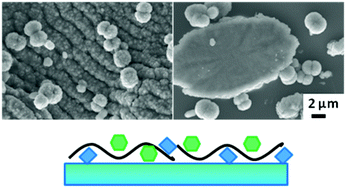Understanding the formation of biominerals like nacre can lead to the fabrication of more advanced biomimetic materials. Several factors are known to influence the final form of both native nacre and biomimetic synthetic variants. Two important components in calcium carbonate biominerals such as nacre are the organic scaffold and the acidic proteins. Interactions between these two components may also influence final composite characteristics. In this investigation chitosan hydrogels were prepared from acidic aqueous solution using four alcohols as cosolvents. The addition of alcohol enables direct modification of the network of the chitosan hydrogel (and thereby the nanometre and micrometre length-scale structure of the hydrogel). Both alcohol-modified chitosan and subsequently reacetylated chitin scaffolds were then mineralised with a combined soaking mineralisation method in the presence of poly(acrylic acid), the latter of which mimics the role of the acidic proteins in the native system. The effects of these structural variations of the hydrogel, induced by the presence of alcohol during fabrication, on (1) the formation of a polyelectrolyte complex between the chitosan or chitin and the poly(acrylic acid) and (2) the subsequent polymorph and morphology of calcium carbonate crystals mineralised within the hydrogel scaffold were investigated. Increasing the amount of the alcohols 1,2-propanediol or 1,3-propanediol led to increased disruption of the hydrogen bonding of the hydrogel scaffold and significant changes to, or reduced formation of, the polyelectrolyte complex formed between the scaffold carbohydrate and the poly(acrylic acid). The disruption of the polyelectrolyte complex in turn led to a loss of control over which polymorph of calcium carbonate is nucleated. These results show that the physical form of the polymer scaffold in these organic/inorganic composites, and the formation of the polyelectrolyte complex play a crucial role in determining the final composite structure and the calcium carbonate polymorphs and morphologies.

You have access to this article
 Please wait while we load your content...
Something went wrong. Try again?
Please wait while we load your content...
Something went wrong. Try again?


 Please wait while we load your content...
Please wait while we load your content...